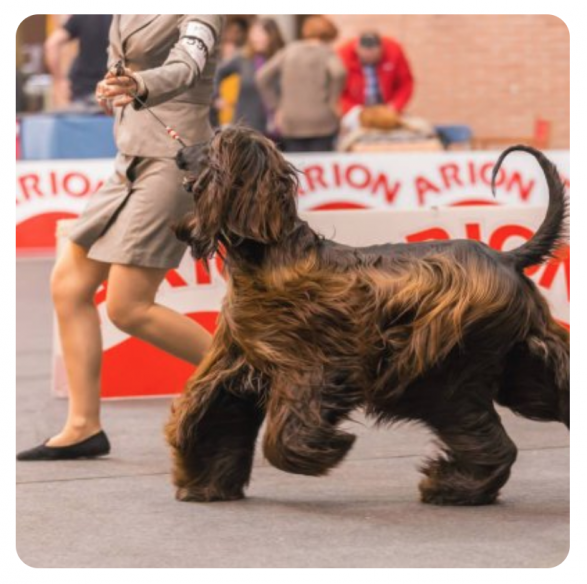
With Westminster Kennel Club Dog Show 2021 now behind us, we can reflect about the dogs we saw and admired, consider the dogs in which we saw something we didn’t like, and dissect what we liked or didn’t like about a dog – and why. Dog people are, we think, perpetual students.
This was the second WKC show for a novice fancier we know, and to her credit, she followed the advice of experienced fanciers who had counseled her to sit ringside of different breeds to look at the dogs – really look – and learn. She later shared her observation that different breeds move quite differently at a trot in a show ring. Hardly a news flash to veteran fanciers, this is, nonetheless, an important observation for her to have learned. In fact, even people who’ve been in the dog fancy for a few years erroneously assume that all breeds trot pretty much the same way by picking up and landing the same feet the same way. Not so!
The Basenji’s swift, tireless trot is radically different from a Chow Chow’s stilted gait. The Min Pin’s hackney gait is different from the pendulum movement of some terriers. A Portuguese Podengo Pequeno’s light trot is different from a Poodle’s straightforward trot with that slightly springy action. The point is that there is no universal trotting style because our breeds are not “built” using a universal template. They have different jobs, and to do those jobs, their shapes must vary. A Puli is square, but another Hungarian breed, the Kuvasz, has more of a horizontal rectangle that’s slightly deviated from a square.
Leg length, size, angulation, the length of bone (namely, that upper arm), even temperament impact a breed’s trotting style, and when one adds layers of coat, be they the cords of a Komondor or the cotton candy outline of a Bichon Frise’s coat, our breeds are actually quite different in how they trot, let alone how they walk, pace, amble, canter and gallop. Add to the mix the conditioning of each dog, and how well they’ve been trained at a particular gait, and there is much to learn by watching different breeds.
Back in the day when we were novices keen to learn more, we were advised that to learn more about Puli movement (our own breed), we should watch breeds like Doberman Pinschers, Dalmatians, and Pointers move in their respective breed rings. The wisdom of this was lost on us early on, but we did it because in those days, that’s what novices did. Over time, we came to see how dogs move when there wasn’t a lot of coat to distract us. We looked at the foot falls, we watched what the knees did, we observed the different moving parts. Pretty soon, and after hours and hours of watching smooth coated breeds gait, we got to where we could visualize what was happening under the heavy coat of a moving dog.
Sadly, it seems to us that fewer and fewer novices are sticking around after their own breed judging to watch other breeds. There is always something else to do, and seemingly less time to do it. In our view, no one ever learned more about structure, movement, and type without watching dogs move – and the learning never ends.
Image: 22th International Dog Show Girona 2018/DepositPhoto
